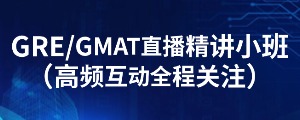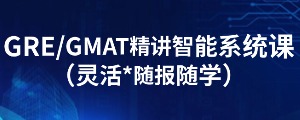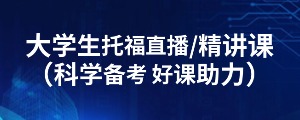选课中心
7099人选课
GRE公开讲座
0元
GMAT公开讲座
0元
一对一体验课
99元
GRE模考网站
10000人
托福备考练习HOT
39209人预约
GRE辅导课程
17537 人
GMAT辅导课程
17537 人
托福辅导课程
17537 人
【定制】1v1
私人订制
资料下载
考前冲刺

扫码关注掌握一手留学资讯
回复XDF免费领
水平测试和备考资料

扫码关注公众号
为了帮助大家高效备考GRE,新东方在线GRE频道为大家带来GRE阅读题目练习:新理论的诞生,希望对大家GRE备考有所帮助。更多精彩尽请关注新东方在线GRE频道!
It is frequently assumed that the mechanization of work has a revolutionary effect on the lives of the people who operate the new machines and on the society into which the machines have been introduced. For example, it has been suggested thatthe employment of women in industry took them outof the household, their traditional sphere, andfundamentally altered their position in society. In the nineteenth century, when women beganto enter factories, Jules Simon, a French politician, warned that by doing so, women would giveup their femininity. Friedrich Engels, however, predicted that women would be liberated fromthe “social, legal, and economic subordination” of the family by technological developmentsthat made possible the recruitment of “the whole female sex into public industry.” Observersthus differed concerning the social desirability of mechanization’s effects, but they agreedthat it would transform women’s lives.
Historians, particularly those investigating the history of women, now seriously question thisassumption of transforming power. They conclude that. such dramatic technologicalinnovations as the spinning jenny, the sewing machine, the typewriter; and the vacuumcleaner have not resulted in equally dramatic social changes in women’s economic position orin the prevailing evaluation of women’s work. The employment of young women in textilemills during the Industrial revolution was largely an extension of an older pattern ofemployment of young, single women as domestics. It was not the change in office technology,but rather the separation of secretarial work, previously seen as an apprenticeship forbeginning managers, from administrative work that in the 1880’s created a new class of “dead-end” jobs, thenceforth considered “women’s work.” The increase :in the numbers of marriedwomen employed. outside the home in the twentieth century had less to do with themechanization of housework and an increase :in leisure time for these women than it did withtheir own economic necessity and with high marriage rates that shrank the available pool ofsingle women workers, previously, in many cases, the only women employers would hire.
Women’s work has changed considerably in the past 200 years, moving from the household tothe office or the factory, and later becoming mostly white-collar instead of blue-collar work.Fundamentally, however, the conditions under which women work have changed little sincebefore the Industrial Revolution: the segregation of occupations by gender, lower pay forwomen as a group, jobs that require relatively low levels of skill and offer women littleopportunity for advancement all persist,-while women’s household labor remains demanding.Recent historical investigation has led to a major revision of the notion that technology isalways inherently revolutionary in its effects on society. Mechanization may even have slowedany change in the traditional position of women both in the labor market and in the home.
Which of the following statements best summarizes the main idea of the Passage?
AThe effects of the mechanization of women's work have not borne out the frequently heldassumption that new technology is inherently revolutionary.
BRecent studies have shown that mechanization revolutionizes a society's traditional valuesand the customary roles of its members.
CMechanization has caused the nature of women's work to change since the IndustrialRevolution.
DThe mechanization of work creates whole new classes of jobs that did not Previously exist.
EThe mechanization of women's work, while extremely revolutionary it its effects, has not,on the whole, had the deleterious effects that some critics had feared.
The author mentions all of the following inventions as examples of dramatictechnological innovations
Asewing machine
Bvacuum cleaner
Ctelephone
The passage states that, before the twentieth century, which of the following was trueof many employers?
AThey did not employ women in factories.
BThey tended to employ single rather than married women.
CThey employed women in only those jobs that were related to women's traditional house-hold work.
DThey resisted technological innovations that would radically change women's roles in thefamily.
EThey hired women only when qualified men were not available to fill the open positions.
Which of the following best describes the function of the concluding sentence of thepassage?
AIt sums up the general points concerning the mechanization of made in the passage as awhole.
BIt draws a conclusion concerning the effects of the mechanization of work which goesbeyond the evidence presented in the passage as a whole.
CIt restates the point concerning technology made in the sentence immediately preceding it.
DIt qualifies the author's agreement with scholars who argue for a major revision in theassessment of the impact of mechanization on society.
EIt suggests a compromise between two seemingly contradictory views concerning theeffects of mechanization on society.
正确答案
A AB B B
以上就是关于“GRE阅读题目练习:新理论的诞生”的内容,更多精彩内容,请关注GRE频道!

 资料下载
资料下载
2024中国学生留学备考白皮书下载
发布时间:2024-05-20添加新东方在线美研助教号
回复【资料】获取
GRE高频真词表资料下载
发布时间:2024-05-20添加新东方在线美研助教号
回复【资料】获取
GRE数学-OG官方150题资料下载
发布时间:2024-05-20添加新东方在线美研助教号
回复【资料】获取
GRE数学常用词汇资料下载
发布时间:2024-05-20添加新东方在线美研助教号
回复【资料】获取
2024GRE数学重点突破资料下载
发布时间:2024-05-20添加新东方在线美研助教号
回复【资料】获取
2024GMAT模考题&答案资料下载
发布时间:2024-05-20添加新东方在线美研助教号
回复【资料】获取
GRE&GMAT阅读难句教程资料下载
发布时间:2024-05-20添加新东方在线美研助教号
回复【资料】获取
2024年托福考试重点题目资料下载
发布时间:2024-05-20添加新东方在线美研助教号
回复【资料】获取
托福独立口语必练70题资料下载
发布时间:2024-05-20关注新东方在线美研订阅号
回复【GRE】获取
托福口语综合口语精听50题节选资料下载
发布时间:2024-05-20添加新东方在线美研助教号
回复【资料】获取
托福听力1200词资料下载
发布时间:2024-05-20添加新东方在线美研助教号
回复【资料】获取
托福写作综合写作练习册-听力精听25篇资...
发布时间:2024-05-20添加新东方在线美研助教号
回复【资料】获取
托福写作综合写作练习册-阅读改写50篇资...
发布时间:2024-05-20添加新东方在线美研助教号
回复【资料】获取
托福阅读核心词表1500词(前30天优先必学...
发布时间:2024-05-20添加新东方在线美研助教号
回复【资料】获取

添加美研助教号,
回复【GRE】获取备考必看资料包

 推荐阅读
推荐阅读
备考GRE,对大部分同学来说也是一个新挑战,尤其是阅读部分,如何在有限的时间内大幅提高阅读速度呢? 快来本文看看吧。
本文今天为大家带来的是gre考试中easy等级难度的阅读片段,一起来看看吧!
2022年3月13-19日GRE阅读题回忆及答案(六)来啦,来本文和新东方在线GRE一起来看看详细信息吧。
2022年3月13-19日GRE阅读题回忆及答案(五)来啦,来本文和新东方在线GRE一起来看看详细信息吧。
2022年3月13-19日GRE阅读题回忆及答案(四)来啦,来本文和新东方在线GRE一起来看看详细信息吧。
2022年3月13-19日GRE阅读题回忆及答案(三)来啦,来本文和新东方在线GRE一起来看看详细信息吧。
2022年3月13-19日GRE阅读题回忆及答案(二)来啦,来本文和新东方在线GRE一起来看看详细信息吧。
2022年3月13-19日GRE阅读题回忆及答案(一)来啦,来本文和新东方在线GRE一起来看看详细信息吧。
2022年2月13日GRE阅读题回忆及答案来啦,来本文和新东方在线GRE一起来看看详细信息吧。
2022年2月13日GRE阅读题回忆及答案来啦,来本文和新东方在线GRE一起来看看详细信息吧。


 GRE/GMAT直播精讲小班
GRE/GMAT直播精讲小班
 GRE/GMAT精讲智能系统课
GRE/GMAT精讲智能系统课
 托福直播/精讲课(30天/60天)
托福直播/精讲课(30天/60天)
添加美研助教号,
回复【GRE】获取备考必看资料包

 资料下载
资料下载
添加新东方在线美研助教号
回复【资料】获取
添加新东方在线美研助教号
回复【资料】获取
添加新东方在线美研助教号
回复【资料】获取
添加新东方在线美研助教号
回复【资料】获取
添加新东方在线美研助教号
回复【资料】获取
添加新东方在线美研助教号
回复【资料】获取
添加新东方在线美研助教号
回复【资料】获取
添加新东方在线美研助教号
回复【资料】获取
关注新东方在线美研订阅号
回复【GRE】获取
添加新东方在线美研助教号
回复【资料】获取
添加新东方在线美研助教号
回复【资料】获取
添加新东方在线美研助教号
回复【资料】获取
添加新东方在线美研助教号
回复【资料】获取

 阅读排行榜
阅读排行榜
 相关内容
相关内容